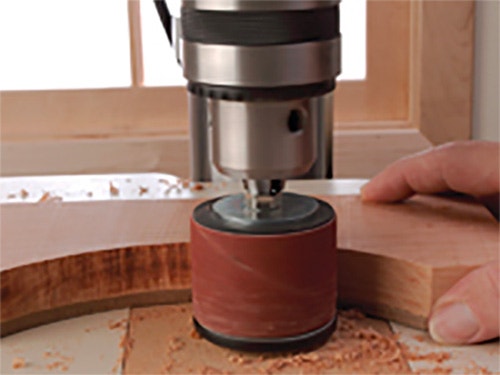Smoothing Out Curved Parts
There are two popular methods for using a template to smooth out the edges of curved parts: a flush-trim router bit, and a sanding drum equipped with a template guide. Both have their advantages.
A flush-trim router bit is often the best answer. It's quick and final. You get right down to a smooth, planed edge in one quick pass. A drawback can be that when you are cutting curved parts, you are invariably faced with either having to cut upwards into the grain on one or more sections of the curve, which can lead to tearout problems, or having to make a climb cut (moving the workpiece in the same direction as the rotation of the bit) - a practice that takes a little practice, and can be unsafe if done incorrectly. Still, a quality flush-trim bit and a moderate feed rate will quickly lead to the results you're after in "run of the mill" curve trimming situations.
For exceptionally thick stock, very steep curves, and wood that chips or tears easily, a drum sander outfitted with a template guide is the alternative of choice. A "template guide" is simply a smooth edged disk attached to the bottom of the sanding drum that follows the edge of the template just like the pilot bearing of a router bit. The sanding drum method eliminates the tearout and chipping problem and allows you to smooth out thicker stock safely and effectively.
Here's the good news: It's surprisingly affordable to have both methods at your disposal. Rockler's unconditionally guaranteed Pattern Flush Trim Router Bits are all priced in the $35 - $48 range. Rockler also offers a 25 Piece Drum Set. All in all, it's a small price to pay to be ready for just about any curve your projects can throw at you.
Keep the inspiration coming!
Subscribe to our newsletter for more woodworking tips and tricks




